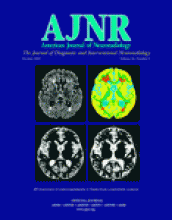Abstract
BACKGROUND AND PURPOSE: Carotid angioplasty and stent placement may be the preferred treatment in patients with carotid dissection who have failed medical management. The goal of this study was to determine the procedural feasibility and safety as well as long-term complication rates of carotid angioplasty and stent placement in a consecutive cohort of relatively young, high-surgical-risk patients.
PATIENTS AND TECHNIQUES: A series of 26 consecutive patients (mean age, 49 years; 15 men and 11 women) who underwent angioplasty and stent placement for carotid dissection with or without pseudoaneurysm from April 1997 to April 2005 at our institution (9 traumatic, 8 spontaneous, and 9 iatrogenic) was retrospectively reviewed. Twenty-eight stents were used in 29 procedures performed on 27 vessels (20 internal carotid arteries and 7 common carotid arteries). Patients were followed with cerebral angiography, CT, sonography, or clinically for a mean of 14.6 months (range, 5 days to 48.2 months) with 17 of 26 patients having at least 6 months of follow-up. Procedural and long-term complication rates were calculated.
RESULTS: Dissection-induced stenosis was reduced from 71 ± 18% to no significant stenosis in 20 of the 21 patients with measurable stenosis. The procedural transient ischemic attack (TIA) rate was 3 of 29 procedures (10.3%). There were no procedural strokes. One patient required angioplasty of a common femoral artery. One procedure was terminated when an asymptomatic new intimal flap was created before intervention. Two patients had occlusions of the treated vessel noted at 22 days (presented with contralateral stroke) and 3.4 months (asymptomatic). There were 2 unrelated deaths from myocardial infarction at 8 days and 15.2 months. Two patients had recurrent ipsilateral TIA at 2.7 months and 12 months. The 30-day occlusion and death rate was 2 of 29 procedures (6.9%).
CONCLUSION: In this series, angioplasty and stent placement were effective in relieving stenosis secondary to carotid dissection with or without pseudoaneurysm and have low rates of ischemic complications.
- Copyright © American Society of Neuroradiology












